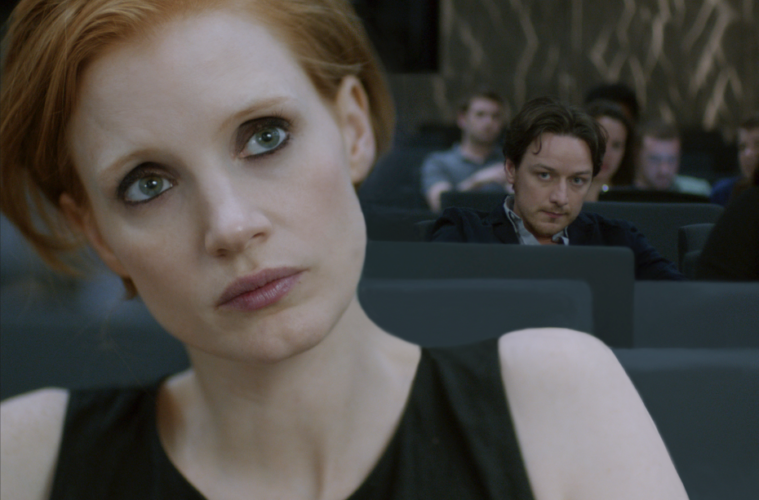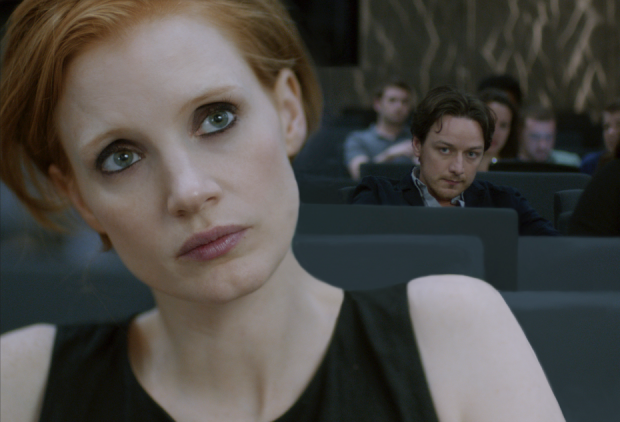
At least part of Ned Benson’s directorial debut is arriving in theaters this weekend. Collectively entitled The Disappearance of Eleanor Rigby, Benson’s work is actually three separate films telling a story of estranged love from different (or combined) perspectives. Him, the version told by James McAvoy’s character Connor Ludlow, along with Her, the film told by Eleanor Rigby’s (Jessica Chastain) point of view will be released early next month, but first is Them, a slimmer version that combines both sides.
I recently had the chance to speak with the writer-director for an extensive conversation where we discussed the production process and film structure. We touched on Chastain’s (who is also a producer) influence on getting the project made, crafting the different versions, shooting in New York, working with Bill Hader, what’s next, and much more. Check out the full conversation below.
With this project, it took over a decade since you first conceived the idea for it come to screens. I know Jessica Chastain was a producer and helped it move along. Can you talk about that journey and your collaboration with her?
I started writing the first script about ten years ago, when I was 27 and I’m 37 now. About a year or two later — Jess and I were friends and had been for 11 years — I gave the script to [Jessica] and she looked and she liked it but she started asking me questions about the characters. That opened up an idea which I thought was very interesting, because I wanted to make a love story and it would be interesting to make sort of a two-sided love story showing the perspective of the guy and the perspective of the girl. I used that thought and created a whole other script and worked with Jess and Cassandra [Kulukundis, producer of the film]. And we shared drafts and then we’d created this 223-page story that ultimately became the film. Then Jess first started to take off, but wasn’t completely bankable. We were excited about her and we just pulled together financing and it was rejection after rejection. The group of us that were involved, which also included Jess Weixler, who is Jess’ best friend, we really stuck with it. I was writing for hire on the side to pay the rent and Jess, well her career was starting to take off. So it was interesting because we were two struggling filmmaker-actors at the beginning and by the end of this, her career had taken off and all of a sudden when James McAvoy got involved something clicked into place and we got to go make this movie.
I loved the Tree of Life, but it wasn’t necessarily a massive hit. I’m curious, was there a certain movie — I know The Help was a big hit — or did it naturally evolve based on projects she became attached to like Zero Dark Thirty?
Obviously with The Tree of Life all of a sudden people became really interested and then she did The Debt and she did a bunch of other films, but I think after she shot The Help and she got the Academy Award nomination, her career really kicked into gear and James joined after that. That’s when things really clicked together for us.
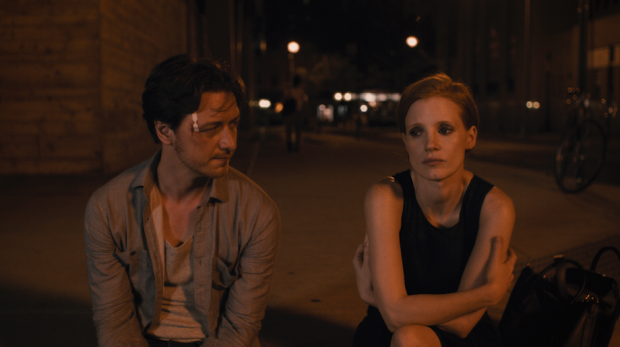
In today’s romantic drama world some films get criticized for having one, perhaps bias, perspective only. Did you share that kind of frustration and wonder why this hasn’t been done before? Was that a driving factor just looking at the marketplace and looking at what other kind of films were around?
I wouldn’t say it was a driving factor in that sense it was more like, this would be really interesting to try. I think in order to present a love story what better way than to show both perspectives of a couple? So that became really interesting conceptually. I didn’t want to go in thinking, “Oh, we are doing something so different.” I just wanted us to be doing something with a concept we were excited about and not think like, “Oh, we are doing something special.” It was just something we wanted to do and our concept. I didn’t want to have that mentality. I didn’t want to pretend that we were exceptional. I just wanted to try and make a movie. It was tricky as it was and we used the concepts which mostly terrified people, in terms of investors. It was exciting to a few people and that’s all we really needed. When you’re telling a story I just wanted to tell it in the appropriate way, that’s what I was thinking about doing. The two perspectives and the two parts and an interest in subjectivity is what I was trying to be doing.
Getting to the aspect you touched on with investors and the different cuts, that’s a big topic of discussion now. When we’re presented as press to see the Them version first, I kind of took it as this is the version that will probably be most widely seen — at least initially — and then Him and Her could feel like expanded director’s cuts, even though you obviously had a say in everything. How would you go about recommending which version to see first?
I think exactly what you just said is correct. I think Them is a two-hour film about a couple that ultimately I feel most audiences will choose to go see. I think it gives you more of a typical length movie experience. But the Him and the Her are expansive and there are new characters and there are side plots that don’t exist in Them that exist in those other two films. Those two films become more about those separate perspectives and two characters and feel like a new space you move in to, in terms of the initial film you watch. That’s the best way to see it, because you will have an expansive new experience with it as opposed to seeing Him and Her and Them following it. But I also think you can just go see Him and Her or just see Them. The point for me is to create a subjective experience for the audience and have them choose the way they want to see it. If you want to see Them then great, go see Them, and then go see Him and Her or just see Them or just go see Him and Her or go see Him or just Her. I’m not going to tell you which way is the right way to see it. The point is to create your own experience with it.
About Him and Her, when they are released in October, is it a double feature or do you pay for one?
It’s a double feature that you pay for one. You have one movie ticket and get to see both movies. It gives you the chance to see both on the one bill. That was a fun idea for me.
When I went to go see Them I avoided trailers just for a fresh experience, but last night I saw the trailer and I picked up on the idea that it literally is different perspectives in the sense that you’re viewing it how James McAvoy’s character views it and Chastain’s, using different takes. With the Them editing process, did you balance things out with equal perspectives for different scenes or was it just a sequence where one was from Her and one was from Him?
It really was depending on how the rhythm of the film was dictating which version of the scene seemed more appropriate, emotionally or what I thought worked best. If you look at the films you’ll realize that there are different visual palettes, like there are different color palettes and different camera rhythms and different costumes. So when I was making those choices I also had to be aware of continuity. So if I chose a scene before where James is wearing a green shirt, then I had to choose a scene later where he also is wearing a green shirt to sort of follow the continuity of the story. There were little details like that that helped dictate things to me, but mostly I just looked for what I thought was the most emotionally resonant or the things that hit hardest and got across the themes that I was playing with in that version of the film.
There’s a lot of unique and specific touches that feel very personal to their relationship. I loved the scene where they’re in the car and she wants to listen to the Top 40 station and he turns it off. Even with all that stuff, stepping back after you view it, it feels very much like a universal love story — there’s emotions everyone has gone through, even if you’ve never been married. Can you talk about embracing that aspect and having a balance?
There are definitely personal things that you use and there are always moments in relationships, like when they’re in that scene that you’re talking about, they make a stop at the 7-Eleven and get their Twizzlers and their soda, which is something they always did. If you remember that flashback sequence, they’re trying to recreate a moment in their relationship that was happy for them and they’re doing it almost a subconscious way through the routine that they used to have together. So yeah, I wanted to call attention to these little shared experiences that build a relationship and these shared moments, whether it’s the fact that you bought Twizzlers from 7-Eleven together or you both like certain songs. Those are things that as much as you love someone you can be annoyed by it too. I just wanted to touch on all those little detail-oriented things that make up a relationship. There are huge moments that are punctuation marks in our lives, but there is also the minutia that become the texture in our relationships.

I won’t spoil anything, but the structure you provided there is a great deal of mystery. Is that kind of structure the same in Him and Her? Can you talk about structuring it that way and having tension as we’re trying to figure out what’s going on?
I think it is different in how I wanted to create a sense of mystery and sort of weave a lot of subtext to fill in the answers. To me that’s more interesting because in Him and Her or even in Them, the first quarter of the movie you don’t really know what’s happened. You’re just sort of looking at behavior and wondering what is creating this stage and that’s really interesting to me. So I wanted to structure it in this way where you are seeing people react and behave in certain ways and wondering what it is that’s defining that behavior. I think that that exists in all three of the films. In Him there’s more of the relationship up front, you see them together in present-day before she leaves and all of a sudden she leaves and you’re not sure why, but you know something is wrong between them. And in the beginning of Her it’s just her on the bridge and you have no idea she’s even married until one-third of the way through the film, which creates a sense of mystery. Each of the films kind of fills in the blanks to the story where all of a sudden you just realize something because the other movie fills in the subtext. The structure is kind of interesting because it makes you ask more about these people and wonder why they’re acting the way they’re acting with each other.
It seems as though Hollywood studios are trying to get people back in the theatre with the 3D craze. I feel with indie cinema — this summer we saw Boyhood, where if you don’t see it in the theatre, it isn’t the same — and your movie is kind of next in line, where it feels like almost an event film because of the approach, even if it is a modestly-budgeted drama. With the current state of cinema is that drawing power to make it a special event good for indie cinema?
I hope so. I think Boyhood did such a beautiful job and I’m so happy it’s been so successful because it tried something different and I think we’re trying to give a different theatrical experience with different ways to view the film and having these different perspectives and choices and ways to see it. So I hope so. You can never predict what an audience is going to do or how they’ll react but my hope is that this theatrical experience has a renaissance in it. Indie film especially, a lot of these small films can’t compete with these enormous tentpoles and 3D and such, but I hope that precedent of Boyhood and the fact that I’m a first-time filmmaker and actually got lucky enough to make this film will give other filmmakers the opportunity to do the same and try different things. People do have a reason to go to indie cinemas which sometimes get over-saturated. I think it’s time to do something a little bit different within this space or within that context and hopefully get people to come to the theatre.
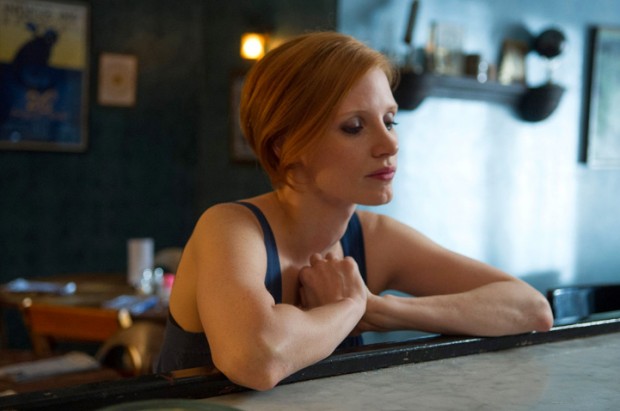
Getting to the actual production, it was a 40-day shoot?
Yeah, it was crazy.
I used to live around Astor Place, right where it was filmed and it feels very natural capturing New York. Could you comment on the production and the interaction of working in the city?
When you’re shooting in New York and you’re shooting outside and you’re a small film, you can’t control the city. The city is a character in your film whether you like it or not. Sometimes it’s amazing and can be the best collaborator in the world and sometimes it is a friggin’ nightmare. Especially like how we shot all those walking scenes, between James and Jess, and all of those people around, we have very few extras in our scenes. Most of those are live street scenes where we have real New Yorkers cruising through them. That was amazing, but at the same time you also have people who all of a sudden realize they’re being filmed and freeze and stare straight at the lens. We had one day where we were shooting at the Astor Place subway stop and James is walking down the subway stop and this huge tourist group of Korean tourist students recognized him from X-Men and went crazy. All of a sudden our discretion and trying to be quiet was just ruined and it makes things tricky.
Can you please put that on the DVD as an outtake?
[Both laugh.] I think the takes we actually used, we had to cut at the last moment before you’d notice that because we only had so many takes to shoot before you run out of time or into issues.
I was happy to see Bill Hader, who was in Skeleton Twins, which was a more dramatic role I saw at Sundance. He has a great role where you think he might be funny, but he catches you off-guard. Can you talk about casting him? Were you surprised when you collaborated with him?
Yeah, it was something my producer and I talked about for that character. We thought he would be really great for it with his reach to go for someone like him, but he’s obviously very busy. We lucked into getting him and he has this wonderful levity because everybody knows him for his comedy but I think he’s an extremely talented dramatic actor and just watching the dynamics of his performance, especially in the scenes where he has to be a friend. He can go from cracking a joke to being very earnest and sincere. It’s very rare to find that and he’s one of those people who can do whatever he wants as an actor. He’s incredibly versatile and he could easily move and do more drama if he wanted to, but he’s also one of the funniest people you’ll ever meet. Having him on set is so much fun because he’s a complete cinephile. You can go from talking about whatever B-movie he just watched or gone on a marathon of whatever filmmaker, then the next second he’s doing an imitation of someone and singing a song from Rent in the middle of a take and just cracking us all up. He’s amazing. I’m really glad I got the chance to work with him in a dramatic acting space.
Some directors, after they do an ambitious project like this, they may say, “I never want to return to this thing again. I want to do something completely different.” Do you have that feeling? Do you want to make just a 90-minute drama without different perspectives or do you want to explore different dramas, or just whatever you come across?
I’m retiring. [Laughs]
Well, you had a good run. It can be like Night of the Hunter.
No, I have another script. It started off as something small but now it’s gotten bigger and it’s a big character study.
Is it going to be four movies with four perspectives?
[Both laugh]. I’m going to stick to one movie this time. That’s the easier step to make. I’ve done enough movies with my first one. This is a new script that I just wrote this year. It’s sort of a Robert Altman-style character study that takes place in Los Angeles before digitalization in the music business. It’s just about people who go to LA to construct an identity and what that does to them, whether they fail or succeed or both.
Best of luck with that, congrats on the movie. It was great talking with you.
Great talking with you as well. Thank you for taking the time.
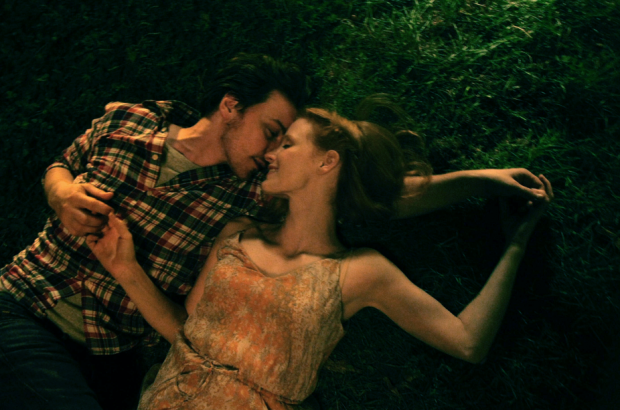
The Disappearance Of Eleanor Rigby: Them opens in limited release on Friday, September 12th. Her and Him open on October 10th.

